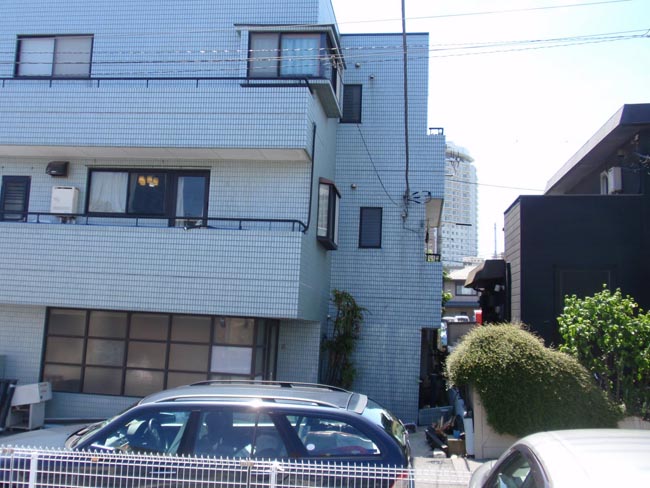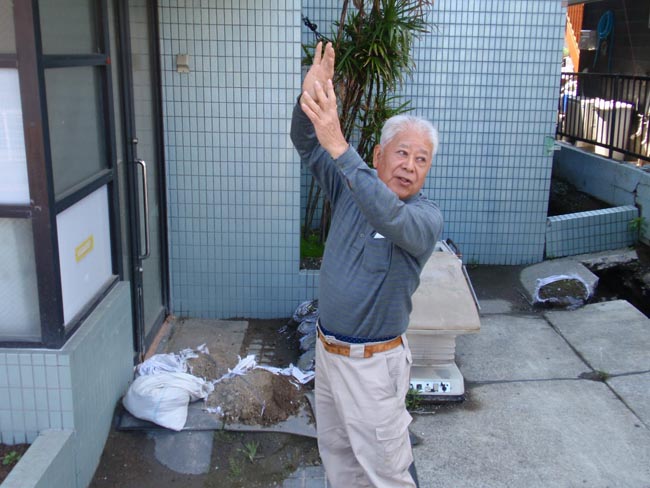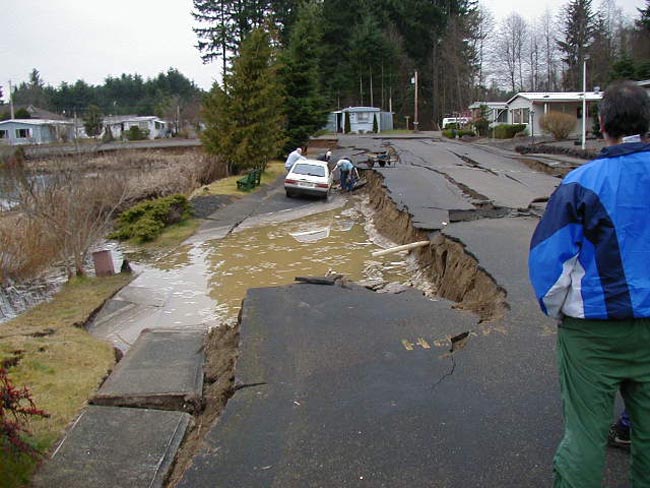Two major earthquakes last year raised red flags for seismically-active parts of North America. Some of the damage in Japan and New Zealand resulted from a phenomenon called liquefaction, which turns the ground turns into Jell-O-like quicksand.
Transmission towers topple, buildings sink and utility pipes break. Now, geologists in the Pacific Northwest have mapped the spots most likely to liquefy in an earthquake.

This summer, the sound of hydraulic jacks reverberates through upscale neighborhoods near Tokyo Bay. Look closer, and you’ll notice some of the homes here are tilted.
We’re in the suburb of Urayasu, home of Tokyo Disneyland. This area escaped tsunami damage. But the district suffered major damage from soil liquefaction.
Darren Chen of the Tokyo Institute of Technology explains what happened.
“This soil liquefaction is due to the fact that you have high water table in this region.”
Chen says much of Urayasu is built on fill. It is land reclaimed from the sea making it prone to liquefaction.
“It usually occurs in sand, in fine sand deposits,” Chen says.
When the earth shook for minutes on end, water pushed upward under pressure. The ground turned to sludge or quicksand.
Mini mud geysers erupted in the yard and street at 77-year-old Toru Kawahara’s house. Well over a year after the quake, he’s still cleaning up silt that flowed into his home’s ground floor.
Kawahara’s house is structurally sound, but the whole thing settled off kilter. The back corner is nearly two feet lower than the front. All over town, water and sewer connections broke. People had to use porta-potties for months afterwards.

“We knew that if an earthquake came, this area would be weak since it’s a landfill,” Kawahara says. “I used to work in the structural engineering industry, so I had some knowledge. If an earthquake were to come, this land probably wouldn’t make it. But we didn’t think with this earthquake was big enough.”
Kawahara’s home is more than 200 miles away from the earthquake epicenter. It was the long duration of shaking, not its severity, that started the cascade of damage.
The major population centers of the Pacific Northwest lie a similar distance from the likely origin of our Big One. That’s why a reconnaissance tour of liquefaction damage in Japan made a big impression on earthquake engineer Scott Ashford of Corvallis. Ashford is now interim dean of Oregon State University’s College of Engineering.
“For these large magnitude-9 earthquakes, we can see liquefaction over hundreds of square miles,” he says. “And for us, that would mean as far as the I-5 corridor.”
Ashford fears we could end up in far worse shape than Japan since the Japanese prepare better for earthquakes than anyone else. He says it’s not a gap that can be fixed overnight.
Ashford figures it will cost billions of dollars to strengthen all of the Northwest’s vulnerable bridges, schools, fuel depots, fire stations, etc.
Defenses against liquefaction include compacting or “densifying” the soil before construction or installing stone columns or pilings beneath a foundation.
“We can’t just stick our head in the sand… and let it liquefy,” Ashford says. “What we’ve got to do is understand where we are, accept that risk and then slowly start mitigating — and understand that it will take a few decades to get where we need to be.”

Step one is figuring out where the greatest vulnerabilities lie.
Oregon, Idaho and Washington have all received federal grants to map liquefaction susceptibility. The Idaho Geological Survey has posted such maps for the Boise area, Idaho Falls to Rexburg, and Teton County. Washington State has completed a statewide hazards map that is searchable online.
In Oregon, the Department of Geology’s chief scientist Ian Madin has finished a similar digital statewide map and says it will go online soon.
“People will be able to go to this web map. They’ll be able to type in their address. The map will fly them to their backyard. They’ll be able to see their house,” Madin says. “Then they can turn on shaking hazard layer or they can turn on the liquefaction potential.”
In Oregon, the valley areas most prone to liquefaction also happen to have the highest concentrations of people and industry. But Madin also says, “Your house is not going to collapse and kill you because of earthquake shaking in most instances simply because of the way that homes in the Pacific Northwest are constructed.”
“So what people really need to think more about is their community. Where is their water supply coming from? Where’s the fire station? Where are the critical facilities?”
What Madin is talking about is “community resilience,” the ability to bounce back quickly from natural disaster. Right now, committees of experts in both Oregon and Washington are drafting detailed recommendations for highways, utilities, fuel supply and commerce.
The planning process hasn’t gotten much attention yet, but the final price tag for better preparedness likely will.
